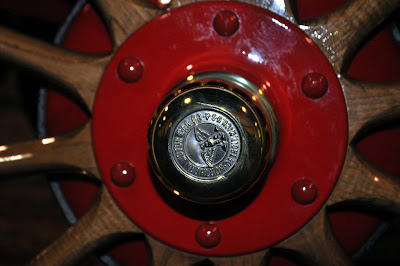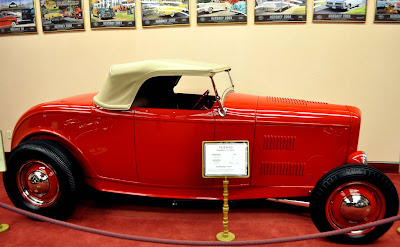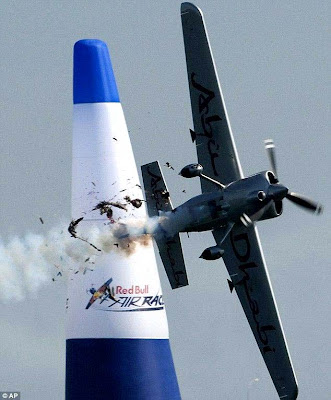Wednesday, March 30, 2011
Nethercutt Museum Wheels
1913 Christie Fire Engine
The following excerpt taken from Wikipedia, a very interesting read with lots more to offer
He was born in the Campbell-Christie House in New Milford, New Jersey on May 6, 1865. He started working at the age of sixteen at the Delamater Iron Works while taking classes at the Cooper Unionin New York City. He eventually became a consulting engineer for a number of steamship lines and in his spare time did some work on early submarine designs. Following the Spanish-American Warhe developed and patented an improved turret track for Naval artillery.
At the same time he was working on designs for a front-wheel-drive car, which he promoted and demonstrated by racing at various speedways in the United States, even competing in the 1905Vanderbilt Cup race.[1] His car was knocked out of the race by a collision with Vincenzo Lancia who was at the time leading the race in a Fiat.[1] Lancia was enraged, but presumably noticed the Christie car's vertical-pillar coil-based independent front suspension: the then unusual configuration subsequently turned up on the Lancia Lambda.[1]
In 1907 he became the first American to compete in the French Grand Prix: the V4 engine of 19,891 cc that powered his vehicle was the largest ever used in a Grand Prix race, but the car retired after four laps with "engine trouble".[1] Christie now switched his energies away from automobile racing to developing his fwd New York taxicab design.[1]
With benefit of hindsight, the taxi design's importance came in large part from the fact that it incorporated a transversely mounted engine/transmission assembly, applying a basic architecture that would be greeted as revolutionary when applied by Alec Issigonis in the BMC Mini fifty years later. However, in 1909 the idea of a 'conventional lay-out' was less firmly rooted than it would have become by 1959, and for Cristie the vehicle's more striking novelty lay the fact that the entire "forecarriage", incorporating all the key mechanical components, could be detached and replaced in "less than one hour", so that the vehicle could stay on the road while the engine maintenance took place.[1] The car's radical lay-out will have necessitated the manufacture of many complex components in-house, and problems encountered subsequently by other manufacturers producing or finding a dependable universal joint make it hard to believe that the Christie vehicle will have been particularly dependable.[1] Given the heavy steering resulting from the fwd lay-out and a published unit price in 1909 of $2,600, it is understandable that the denizens of the New York cab trade did not flock to buy the Christie taxi.[1]
In 1912 Christie began manufacturing a line of wheeled fire engine tractors which also utilized a front-wheel-drive system, and subsequently sold scores of them to fire departments around the country, most notably the New York City Fire Department. The tractors allowed the departments to keep their steam-powered pumps while ending the use of horses to pull them to the scene of the fire.
Labels:
Christie Fire Engine,
front drive,
Nethercutt,
steam pumper
Tuesday, March 29, 2011
Break for a Little Humor
Next time you think you're having a bad day.....
Think the birds will notice?
I'm guessing this isn't the Exit, darn April Foolers
I knew I shoulda turned left at Albuquerque (ala Bugs Bunny)
Momma told me not to stick my nose in there, shoulda listened
Now you see him
Now you don;t....pfffft
Nethercutt Mechanical Music Museum
The wonderful and amazing thing is that all of these instruments actually work!
And produce beautiful sounds.
The score on the wall is "Stairway to Heaven"
Subscribe to:
Comments (Atom)


































































